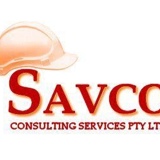Title Page
-
Audit Title
-
Site
-
Conducted on
-
Prepared by
-
Location
General/ Housekeeping
-
Instructions:
-------------------------------------
1. Answer "Yes", "No", "N/A" for the questions below.
2. Add photos and notes by clicking on the paperclip icon.
3. To add a Corrective Measure click on the paperclip icon then "Add Action", provide a description, assign to a member, set priority and due date.
4. Complete audit by providing digital signature.
5. Share your report by exporting as PDF, Word, Excel or Web Link.
General
-
Hot work permit completed and approved?
-
Mechanical ventilation is required if space is less than 10,000 cubicfeet per welder, rooms having a ceiling height less than 16 feet, confined spaces where cross ventilation is significantly obstructed?
-
Welding materials requiring ventilation or air-line respirators: cadmium, fluorides, zinc, lead, beryllium, mercury, stainless steel (oxygen cutting using chemical flux or iron powder or gas shielded arc).
Housekeeping
-
Are aisles marked?
-
Width of aisles maintained?
-
Are aisles in good condition?
-
Are work areas clean?
-
Is housekeeping maintained?
-
Are only authorized and trained personnel permitted to use welding, cutting, or brazing equipment?
-
Does each operator have a copy of the appropriate operating instructions and are they directed to follow them?
-
Are compressed gas cylinders regularly examined for obvious signs of defects, deep rusting, or leakage?
-
Is care used in handling and storage of cylinders, safety valves, relief valves, etc., to prevent damage?
-
Are precautions taken to prevent the mixture of air or oxygen with flammable gases, expect at a burner or in a standard torch?
-
Are cylinders kept away from sources of heat?
-
Are signs reading “Danger - No Smoking, Matches, or Openlights” or the equivalent, posted?
-
Are liquefied gases stored and shipped valve-end up with valve covers in place?
-
Are provisions made to never crack a fuel-gas cylinder valve near sources of ignition?
-
Before a regulator is removed, is the valve closed and gas released from the regulator?
-
Is red used to identify the acetylene (and other fuel-gas) hose, green for oxygen hose, and black for inert gas and air hose?
-
Are pressure-reducing regulators used only for the gas and pressures for which they are intended?
-
Acetylene not used at pressures above 15 psig?
-
Special T-wrench for opening cylinders in place during welding operations?
-
Is welding to be performed on cryogenic piping?
-
Is open circuit (No Load) voltage of arc welding and cutting machines as low as possible and not in excess of the recommended limits?
-
Under wet conditions, are automatic controls for reducing no load voltage used?
-
Is grounding of the machine frame and safety ground connections of portable machines checked prior to starting machine?
-
Are only approved apparatus (torches, regulators, pressure-reducing valves, acetylene generators, manifolds) used?
-
Are the cylinders kept away from elevators, stairs, or gangways?
-
Is it prohibited to use cylinders as rollers or supports?
-
Are empty cylinders appropriately marked and their valves closed?
-
When welding is done on metal walls, are precautions taken to protect combustibles on the other side?
-
Before hot work is begun, are used drums, barrels, tanks, and other containers so thoroughly cleaned that no substances remain that could explode, ignite, or produce toxic vapors?
-
If welding is to be conducted in an area containing compressed gas containers and flammable or explosive materials; has the Safety
-
Office been notified and approval received?
-
Is a check made for adequate ventilation in and where welding or cutting is performed?
-
When working in confined places, are environmental monitoring tests taken? A confined space entry permit approved?
-
Welding/cutting near metal scrap bins?
-
Are the bins marked with type of material?
-
Please proceed to the next section.
PPE/ Air Emissions/ Fire Protection
Personal Protective Equipment
-
Are protective goggles or face shields provided and worn where there is any danger of flying particles or corrosive materials?
-
Are helpers or observers wearing proper eye protection to prevent flash burns?
-
Are approved safety glasses required to be worn at all times in areas where there is a risk of eye injuries such as punctures, abrasions, contusions, or burns?
-
Are protective gloves, aprons, shields, or other means approved against cuts, corrosive liquids, and chemicals?
-
Are employees who need corrective lenses (glasses or contacts) in working environments having harmful exposures required to wear only approved glasses, protective goggles, or use other medically approved precautionary procedures?
-
Is it required that eye protection helmets, hand shields, and goggles meet appropriate standards?
-
Are employees exposed to the hazards created by welding cutting, or brazing operations protected with personal protective equipment and clothing?
-
Are hard hats provided and worn where danger of falling objects exists?
-
Are hard hats inspected periodically for damage to the shell and suspension system?
-
Is appropriate foot protection required where there is the risk of foot injuries?
Air Emissions
-
If the welding creates hazardous air emissions, is the welding area appropriately marked to indicate this?
Fire Protection
-
Are all fire extinguishers accessible, and their locations clearly designed?
-
Are all fire extinguishers inspected and recharged regularly, and noted on the inspection tag?
-
Is the emergency number displayed?
-
Have Safety Office Fire Protection Specialists been contacted?
-
Completed by:











